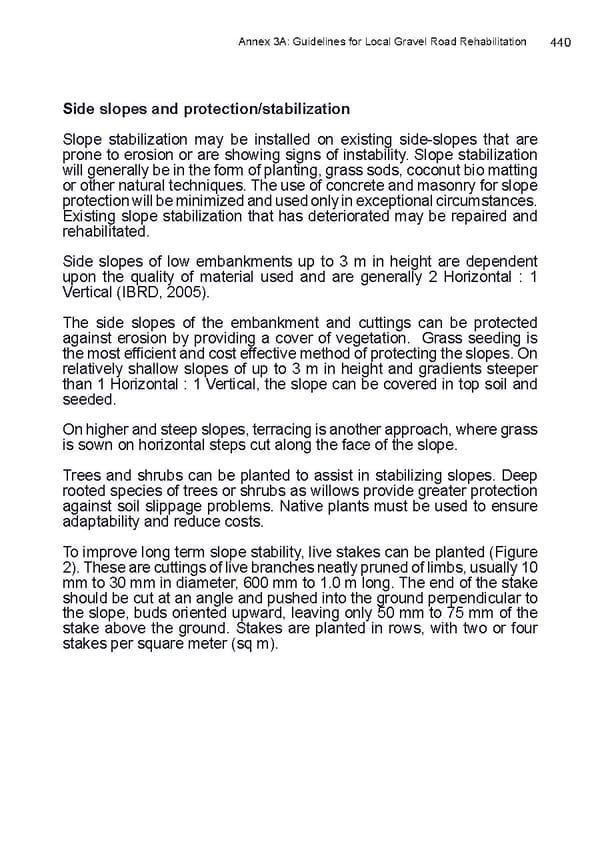Annex 3A: Guidelines for Local Gravel Road Rehabilitation 440 Side slopes and protection/stabilization Slope stabilization may be installed on existing side-slopes that are prone to erosion or are showing signs of instability. Slope stabilization will generally be in the form of planting, grass sods, coconut bio matting or other natural techniques. The use of concrete and masonry for slope protection will be minimized and used only in exceptional circumstances. Existing slope stabilization that has deteriorated may be repaired and rehabilitated. Side slopes of low embankments up to 3 m in height are dependent upon the quality of material used and are generally 2 Horizontal : 1 Vertical (IBRD, 2005). The side slopes of the embankment and cuttings can be protected against erosion by providing a cover of vegetation. Grass seeding is the most eiffcient and cost effective method of protecting the slopes. On relatively shallow slopes of up to 3 m in height and gradients steeper than 1 Horizontal : 1 Vertical, the slope can be covered in top soil and seeded. On higher and steep slopes, terracing is another approach, where grass is sown on horizontal steps cut along the face of the slope. Trees and shrubs can be planted to assist in stabilizing slopes. Deep rooted species of trees or shrubs as willows provide greater protection against soil slippage problems. Native plants must be used to ensure adaptability and reduce costs. To improve long term slope stability, live stakes can be planted (Figure 2). These are cuttings of live branches neatly pruned of limbs, usually 10 mm to 30 mm in diameter, 600 mm to 1.0 m long. The end of the stake should be cut at an angle and pushed into the ground perpendicular to the slope, buds oriented upward, leaving only 50 mm to 75 mm of the stake above the ground. Stakes are planted in rows, with two or four stakes per square meter (sq m).
 LRM Manual CMGP Page 439 Page 441
LRM Manual CMGP Page 439 Page 441